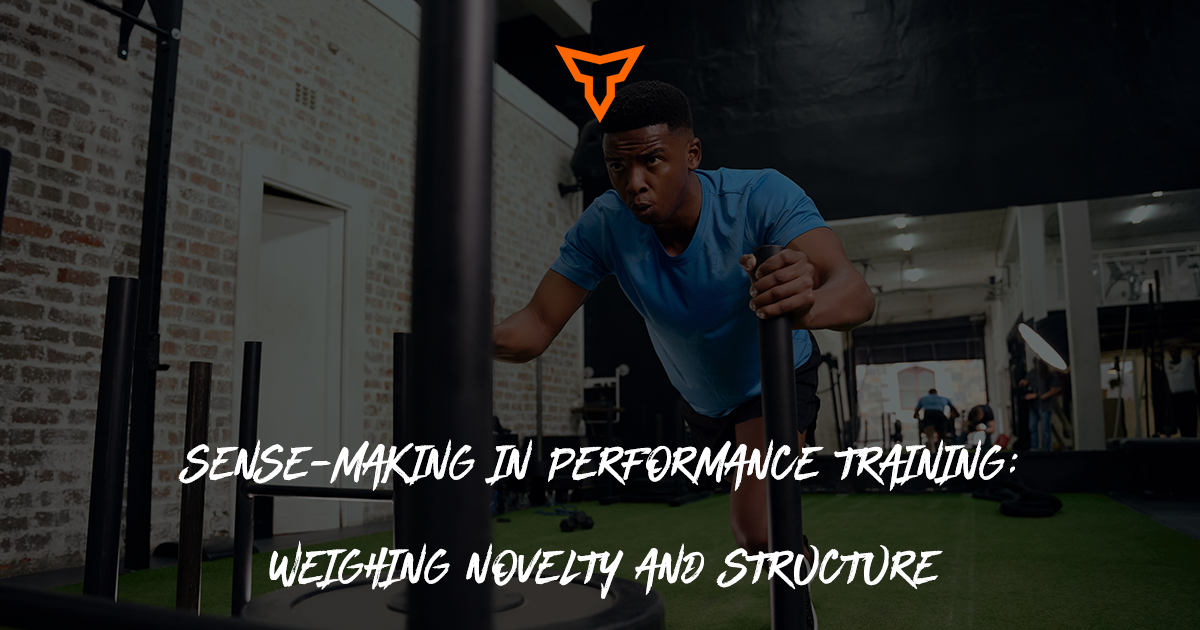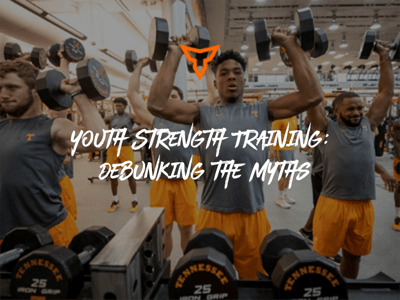Strength Training Baseball Players 101 - (Pt. 2)
In Part I of this series we discussed some of the most fundamental concepts behind “baseball-specific” strength training. In all reality, we talked through some of the do’s and don’t’s of baseball training, and what it truly means to be baseball-specific.
Let’s briefly revisit some of the suggested do’s and don’ts of strength training baseball players:
Avoid…
- Anything that causes pain or symptoms
- Anything with a high potential for turning the asymptomatic into the symptomatic
- Anything that mimics the throwing or hitting action without a sound physiological/programming basis
Consider Implementing…
- Anything that develops the total athlete first, and does so safely and effectively
- Anything that produces positive adaptations for the sport or that counteracts negative adaptations from the sport
Some readers will see the above list and ask if that is truly baseball-specific at all; they might ask "Couldn’t those ‘rules’ apply to programming for any other sport?"
The answer to that question is a resounding, yes! The above points are general in nature because general should always precede specific - in both specific training methods and in overall philosophy - for any sport. To dive any deeper into the specifics before covering the critical general points, above, would be like trying to put icing on unbaked cake batter.
But, what does make for baseball-specific programming, aside from the aforementioned? We will discuss two important concepts to understand when strength training baseball players; right now, we will touch on the challenges imposed by the yearly competitive calendar in amateur baseball.
Challenges of the Amateur Baseball Yearly Calendar
While strength and conditioning specialists are trained (and continue to learn on their own) in the areas of programming and periodization for each part of the competitive year, there are very few that don’t revel in one particular time of year: the off-season. It is in the best interest of the baseball strength and conditioning coach, though, to understand that a true “off-season” is quite elusive in this particular sport. Let’s examine the seasons at the high school and collegiate levels.
High School
The high school level might pose the greatest challenge to the possibility of a true off-season. With the advent and perpetual growth of travel-baseball, many high school players put nearly all of their emphasis on playing ball. This means year-round competition for most ballplayers, especially in the southern states; travel-ball is a summer-to-spring endeavor these days, and what is left over is then given to spring high school baseball.
Summer travel-ball makes organized or team strength-training nearly impossible, which is unfortunate, as this is the only period of time without academic obligations. In the summer, players will spend weeks at a time on the road playing in competitive tournaments, with little access to free weights, and with most of their meals attributed to gas stations and fast food restaurants. Weight training supervision will be low, at best. Compliance will probably be even lower thanks to the demands of the travel schedule. Thus, this period might just be best if considered as an extended competitive season (extending from the spring), with optional basic workouts given to players to complete on their own. While this isn’t ideal, nothing about high school baseball is ideal.
The fall and winter, however, allow for a more focused approach on strength training. Because these athletes are still students, and school is in session during these seasons, they will predominantly compete on the weekends. Some players might not even play travel-ball in the fall, opting instead for high school fall-ball. Thus, players will be on campus during the week (perfect for lifting during or before/after-school), and on some weekends as well. The Fall, then, lends itself to consistent training that can yield significant movement and physical progress.
Spring at the high school level, too, should consist of steady training. Although competition should be the priority during the high school season, young athletes like high school baseball players are highly resilient and can be pushed to train 2-3 times per week depending on the game and practice schedule. With a strong rapport amongst the baseball staff, the strength coach can collaborate with the fundamental coaches to plan out training so that it remains balanced and safe. Ultimately, high school coaches have the most control over and exposure to their players in-season, thus, the greatest opportunity for growth at the high school level may just be in-season. And, considering the developmental nature of the youth level, allotting time and emphasis for physical development in-season is wholly appropriate.
College
The collegiate level has the benefit of being much more structured than the high school sector. With NCAA-regulated periods for training, off-time, holidays, etc. the collegiate strength coach can rest easier knowing their ballplayers at least get some time away from the baseball diamond, and will in fact have an “off-season”. But, the college player still does compete throughout the year, and considerations for training must still be made to accommodate for this challenge.
While the importance of spring baseball in college is astronomically higher than the spring season for high school baseball (winning truly does matter at the college level), training will still be a major component. It is important to realize though, that at this level, training adaptations are harder to come by; as a player’s training age rises, so too must the specificity and loading of their training. Thus, focusing on physical development for just the spring season without laying a proper foundation earlier in the year would yield negligible returns on investment, with whatever time and effort the players have left over from practices, games, and academics.
While the fall does consist of practices and games - some exhibitions and intrasquad games - they exist in much lesser quantities than what is experienced during the spring. And, with players on campus for these periods, the majority of the time can be utilized to train multiple days per week to make significant progress in terms of movement and physical development.
Summer and winter, on the other hand, both possess their own challenges. While the winter does not involve any competing, players often return home for the holidays during this time. Those 2-4 weeks may seem like a great time to implement a “take-home” training plan, but we all know the realities of these kinds of programs: compliance is often low, facilities are inconsistent between players, and supervision of the players by the strength coach is impossible. The summer consists of similar challenges - take-home programs for the majority of players as they leave campus - plus the addition of competitions. For any teams that play deep into the NCAA tournament, travel and high-stakes games will continue even when classes have long-since let out for summer vacation. Additionally, many players take part in collegiate summer leagues, which are played throughout the country. Not only does competition remain a significant stressor posed upon the athletes, travel, facility, and supervision complications to make consistent training hard to incorporate.
Once again, you may be wondering Where are the specifics? Although breaking down the competitive calendar at the amateur levels of the sport may not seem like Earth-shattering information, it is, in fact, vital to understand just how much ballplayers compete at the high school and collegiate levels, especially for the strength and conditioning coach new to strength training in this sport.
Imagine the frustration of the strength coach who lays out an entire summer training program for his/her high school players, only to realize they have travel tournaments 9 out of the 12 weeks. By understanding the competitive seasons in amateur baseball, and all of their challenges, the strength coach new to baseball can plan for the best and most appropriate training during both the competitive season(s) and the “off-season."
Subscribe to our blog
Subscribe to receive the latest blog posts to your inbox every week.
Related posts

Sense-Making in Performance Training: Weighing Novelty and Structure

Youth Strength Training: Debunking the Myths


